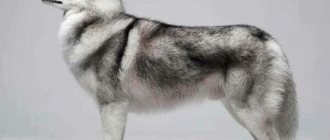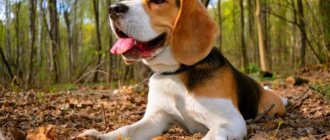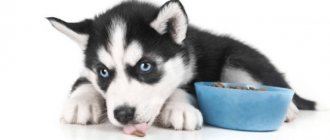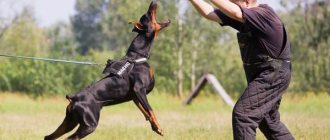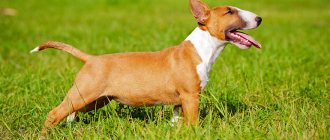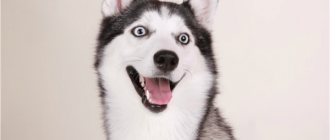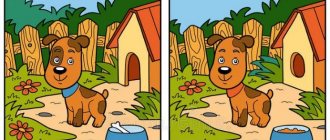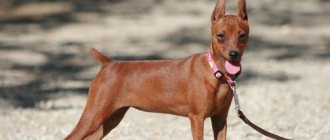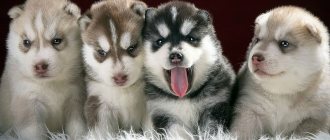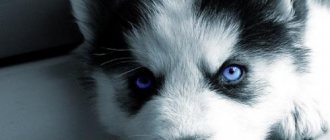Frosts up to 60 degrees, endless blizzards (one hundred and fifty days a year), permafrost, very sparse vegetation, and sometimes even its absence, polar nights and a short arctic summer - these are the natural conditions in the Siberian Arctic.
It would seem that in this kingdom of the snow queen there is only place for polar bears, lemmings and walruses. Common sense dictates that these places are absolutely unsuitable for human life; it is almost impossible to survive in these areas. And, even more so, it’s hard to comprehend that an entire people has been living on the coast of the Arctic Ocean for more than three thousand years!
Advertising:
For what reasons the sedentary nomads chose this territory, which is replete with various deadly dangers, is difficult to say. Perhaps they were forced out of more favorable lands by their militant neighbors, or perhaps they fled from some natural disaster - there are very few artifacts preserved from those immemorial times.
One thing can be said with complete confidence: such a weak and defenseless creature as a person would never have survived in the conditions of the far north without outside help. So who is this wizard who, with the wave of his wand, gave hope for survival to ancient tribes?
There is plenty of evidence that about three to four thousand years ago, the Chukchi, who came to this harsh coast, tamed and domesticated the wolf and, possibly, crossed it with a dog.
It was the presence of a four-legged friend, according to researchers of this region, that became the key to the successful establishment of northern nomads in lands where the climate is considered one of the most dangerous on the planet. In the conditions of a closed community - these incredibly formidable and lifeless voids were not claimed by any of the neighboring tribes - these dogs have preserved the purity of their breed for thousands of years.
The selection proceeded almost naturally - only the strongest survived in the cruel polar winters. It is interesting that dogs began to live next to the Chukchi several centuries earlier than deer.
Character and behavior
These dogs are distinguished by their peacefulness and friendliness. They enjoy the company of dogs, people, and the attention of their owner and family. However, like all northern breeds, they are prone to dominance, willfulness and stubbornness. Huskies prefer to be free, although they unquestioningly obey the owner who can prove his leadership.
Animals are very active and need constant training. If the pet does not splash out energy, then it becomes destructive.
In the family they behave like perky family dogs, always ready to help. They treat their owner with trepidation and cannot tolerate long separations.
Rules for choosing puppies
You cannot buy a baby based on emotions, because the cost depends on the category to which it belongs. Therefore, you need to decide what kind of husky you need - a hunter, a champion at exhibitions, or just a pet friend. You can find out about the cost of a husky puppy here.
Representatives of the nursery will outline the prospects for the individual. There are more chances to buy a purebred Siberian Husky than from an amateur breeder.
It is quite possible to say whether a fluffy will be medium or large by assessing the size of the parents.
Signs of a healthy puppy:
- energy;
- a good appetite;
- protruding ears;
- correct bite;
- strong skeleton.
The animal must have a pedigree and the necessary vaccinations according to age.
Attitude towards children
Even in the far north, it was customary to get a Husky when a baby was born in the house. It was believed that every child should have a dog.
The animals not only served as working dogs. They were nannies, toys, hot water bottles. In severe frosts, all the pets were gathered in a room to keep the children warm.
Huskies treat children of different ages with trepidation, play with them, and take care of them. They will protect babies from danger. The dog is considered a family dog, so it is suitable even for couples with newborns . Any angry or aggressive behavior is not observed among representatives of the breed.
Story
There are several versions of the origin of the breed. The most common opinion points to the northern origin of the dog.
Previously, “husky” was called an Eskimo. The point is not in the essence of the term, but in the consonance of the initial part of the words.
Four thousand years ago, Asians moved north with their pets. Then some domestic animals crossed with wolves. This is how the Siberian Husky came about. He became man's main assistant in harsh climatic regions. The Chukchi appreciated that the dog was unpretentious in its maintenance. He traveled hundreds of kilometers through snow and ice, eating whatever was given to him.
This is interesting: How to extend the life of a husky
According to historical facts, in frosty weather dogs warmed children with their warmth and did not allow them to freeze. The animal's appearance and character have remained almost unchanged since that time.
Husky in English means wheezing. A hoarse voice is characteristic of such animals.
Relationship with the owner
A dog can have different relationships with its owner:
- The most common and correct model is the leadership of the owner and the obedience of the pet. If the Husky understands that a person is a leader, then he will obey him. This can be achieved through long-term training.
- Another acceptable model of relationships is fraternal. When the dog and the owner live and work on equal terms: they share food, bed, house, work together, performing their functions. Then the pet will consider the person an equal and obey him as a partner.
Two wrong parenting options: an idol dog and a rad dog. In the first case, the family exalts the pet over its own needs, which is why the Husky becomes uncontrollable. In the second, the animal is abused, which destroys its psyche.
Education and training
The Siberian Husky's behavior can be impeccable. But for this, the owner will have to do a lot with the animal.
As soon as a puppy appears in the house, you need to call him by his nickname, show him a place, toys, and a toilet. Also, the baby should be walked on a leash, set an activity schedule for him, and think about a meal schedule that is appropriate for his weight, age.
The creature can ignore its owner's requests. Personal feelings and the dog’s needs are a priority. The Siberian makes decisions independently, without analyzing the wishes of people.
Small dogs have bad habits. They love to chew on everything they find. With age, bad habits will disappear, but you cannot ignore your pet’s dirty tricks. It is necessary to make comments in a strict tone, to remove things that the dog could spoil.
It is important for the owner to gain respect from the husky, otherwise he will not perceive the person as a leader. Raising a pet using aggressive methods is prohibited. This will not give a positive result.
Expert opinion
Anna Abramenko
An avid dog lover. Experience in veterinary medicine since 2009.
Ask a Question
Adviсe:
- develop strict intonation;
- develop confident gestures;
- demonstrate a sequence of commands;
- respond with praise to your pet’s correct actions.
This will allow you to properly build relationships and teach the necessary skills.
It is important for a person to provide his four-legged friend with a gradual complication of loads. A popular option is running up the stairs. From 2 months is the optimal age for a pet to start training. Training must be regular and consistent.
- "Ugh". It is necessary to strictly, without raising your voice, pronounce the command every time your pet tries to pick up something on the street. There should be a treat for his obedience.
- "Near". You can master the action while walking. The dog must walk close to the owner. Attempts to run away must be stopped by smoothly pulling the leash and repeating the command.
- "To me". When releasing the animal to frolic, at a certain moment it is necessary to clearly pronounce the task. As soon as the husky obeys, he runs up to the owner, he is praised and treated.
- "Sit". The skill can be practiced at home. When setting a goal, you need to press your palm on the lower back of your four-legged friend.
- "Lie". The training is similar to the previous point.
- "Place". While in the apartment, the trainer pronounces a command.
After completing the task correctly, the dog should receive a treat. The owner must show her that he is pleased with her success. You need to pet and hug your furry pet.
How do dogs get along with cats?
A husky can get along with cats only if they grow up together from childhood . They are even able to make friends. Otherwise, certain problems will arise, although with proper upbringing the dog will restrain its hunting instincts.
Due to the fact that dogs are pack animals, they are accustomed to living off their own feeding. Their habit of killing small animals for survival has still not been eliminated.
Behavior with other pets
All fur-bearing animals, birds, and livestock can become the object of sudden hunting. Huskies love to track game for food. Therefore, it is better not to keep this dog and other pets in the same house. If the dog lives on a farm, then all animals must be well fenced.
Reincarnation
Today we have the opportunity to admire the descendants of an ancient wonderful family of northern dogs only thanks to chance. The fact is that at the turn of the century, visiting Americans, lovers of dog sled racing, came to Chukotka. Admired by the running qualities of the local dogs, they persuaded the Chukchi to sell them several puppies.
These puppies were taken to Alaska, where a real boom soon began, which went down in history as the “gold rush.” There is an urgent need for reliable riding assistants, because the climate of the polar north of America is very similar to the conditions of the far north of Russia. It was here that these dogs began to be very actively reproduced. At first, the Americans simply called this breed “Chukchi.”
Many uneducated adventurers simply did not understand what this meant. More literate comrades tried to explain to them that these were the same Eskimos, only from Siberia. In local slang, visiting gold miners called the indigenous aborigines of the peninsula “eski.”
It is from this word that the name of the incomparably beautiful and amazingly extraordinary and friendly dogs that we now know as huskies comes from.
Here is such an evil irony of fate: in their original territories of habitat, these dogs were doomed by “revolutionary necessity” to extinction, while on another continent, thanks to the efforts of enthusiasts, a new breed was officially recognized in the thirties of the last century.
The dog, which rose from the ashes, was brought to its historical homeland from Europe in the late nineties, after it received well-deserved recognition throughout the world. Of course, modern huskies are a little different from those that accompanied reindeer herders across the vast Arctic expanses. This is understandable; today’s breeders pay more attention to the exterior, while for the Chukchi it was a sled dog. However, over the past century, it is difficult to make any significant changes to an animal that has a thousand-year history.
Strangers and Huskies
Due to its excessive friendliness, the breed cannot serve as a guard or simply protect property. Huskies do not consider strangers dangerous because they are used to being in the company of people and helping them.
As puppies, dogs adore everyone they see. They strive to get to know the whole world. Adult pets become more reserved, a little indifferent to people, and can be wary. However, any traits of aggressive behavior are considered unacceptable for this breed. Cases of outbursts of anger are very rare.
Positive features
- This dog breed is considered one of the most beautiful . Few people remain indifferent to their pronounced blue eyes, which make their look more expressive.
- They are considered one of the smartest breeds. They do not need to be taught to carry you in a sleigh; they will do it without additional training.
- They are very friendly towards people, they can even play with strangers, but they are loyal only to their owner. They will be an excellent nanny for children.
- It is happiness for them to always be close to the owner, to follow him . They will be able to keep you company during your morning jog or bike ride, and they are fun to play with. And at home they can simply warm your feet or help you bring slippers.
- They love to engage in training and physical activity, and can participate in various competitions.
Dog habits
Habits can be physiological, age-related or psychological:
- So, for example, during the period of changing teeth, you can notice your pet’s desire to try everything “to the teeth.”
- Another physiological bad habit is swallowing large pieces when receiving food . This is due to the fact that the animal tends to slow down its metabolism in order to stay full longer.
- Age-related habits include eating feces, stones, and branches. During the period of active growth, the puppy needs many useful microelements. With their deficiency, the pet tries the surrounding objects, getting used to their consumption.
- Another unpleasant feature is the tendency of male dogs to mark corners. This is due to the desire to show that the territory belongs to a certain pet. Simple education will help avoid this.
- Huskies love to dig holes. They can make digs or simply destroy flowerbeds for fun. They like to wallow in the ground and snow, and dig through garbage. During puppyhood, dogs are considered especially destructive.
- Despite the fact that the breed is classified as “quiet” (non-barking), one of the problems is howling. Most often, dogs whine out of boredom or to attract attention. This can be attributed to psychological habits.
How to feed?
You can feed huskies both natural products and industrial food, the main thing is not to mix both types and make sure that the food is balanced and includes all the necessary macro- and microelements.
Energetic and active huskies need protein food - the diet should contain at least 70% meat, but only dietary meat.
Also, when feeding the dog naturally, it is necessary to give:
- offal and cartilage;
- cereals;
- sea fish;
- low-fat fermented milk products;
- egg yolk;
- vegetables;
- fruits and greens.
It is forbidden to feed your pet:
- pork, lamb;
- sweets;
- pasta and bakery products;
- smoked meats, pickles, marinades;
- lard;
- fried, spicy foods;
- milk;
- chicken protein;
- bones;
- nuts;
- potatoes;
- raisins, grapes.
Among industrial feeds, you should choose those with a minimum of carbohydrates but a lot of healthy fats.
The most popular and suitable food for these dogs:
- Nutra Gold;
- Advance;
- Purina Pro Plan (Sensitive Salmon, Medium Robust Health, Medium Robust, Medium Puppy Sensitive);
- Royal Canin;
- Happy Dog (Maxi Baby, Nature Croq).
Advantages of the breed
The owner determines the merits for himself, because all dogs are individual and differ in character. The main advantages of the breed are highlighted:
- Friendliness, positivity, affability;
- Openness, sociability, contact;
- Good intellectual abilities;
- Good relationships with relatives;
- Huskies rarely bark;
- There is no specific dog smell;
- Not aggressive;
- Mobility (remain active until old age);
- Dogs do not need large amounts of food;
- Strong immunity, endurance to cold and work.
Photo and video review
Husky is a wise dog with a high ability to learn. You can verify this by reading information about the breed and looking at sketches with the participation of a Siberian.
The undeniable dignity of the dog is confirmed by photographs.
Disadvantages and difficulties
Breed disadvantages include:
- Stubbornness and willfulness (like all northern dogs, Huskies love freedom, although they are used to living side by side with humans);
- Tendency to dominate in the family (the breed is a sledding breed, its representatives have worked for centuries in a pack, where it is important to show leadership qualities in order to become a leader);
- Tendency to run away (vagrancy is one of the main disadvantages of northern hunting and sled dogs);
- Strong hunting instinct (any bird or small animal in the eyes of a Husky is prey);
- Intolerance of loneliness (the pet constantly needs human attention);
- Dogs love to dig and chew;
- The need for high physical activity;
- Twice heavy molting (in spring and autumn);
- The breed is not suitable for beginners and requires training;
- Not suitable for security.
Character of the Siberian Husky
Friendliness, liveliness of mind and calm disposition are the main properties of the Siberian Husky. But, speaking about these wonderful dogs, I would not like to limit myself to such a short list.
Ready for the New Year!
The ancestors of modern animals, who faithfully served man for many centuries in the harsh conditions of the Far North, passed on to their descendants all the variety of distinctive character traits and behavior that so attract connoisseurs of this breed today.
Huskies, like true sled dogs, are very active and need good, constant exercise.
Representatives of this breed are not suitable for hunting enthusiasts, despite the presence of a fairly strong instinct. For the Siberian Husky, such hunting is one of the ways of subsistence, and it will not share the prey (the dogs were fed only in winter; the rest of the time the team was grazing).
These northern dogs are pack animals, which has led to almost complete elimination of the instinct to protect their own territory, so such pets are completely unsuitable for the role of a guard. The lack of aggression towards humans, even strangers, also does not allow these dogs to be classified as guard dogs. Attempts to embitter the dog can only lead to permanent mental disorders of the animal. Nature has endowed these amazing dogs with well-developed intelligence and the ability to make independent and often extraordinary decisions. Hence the difficulties that arise during training, when certain commands require a template algorithm of actions from the husky. The use of representatives of the breed as service animals is not practiced.
The Siberian Husky is a companion dog. She is perfect for a large family; she will tenderly and reverently love all members of the household, although she recognizes only one as the leader and master. The attitude of these animals towards children deserves special attention. It is difficult to find a more gentle, attentive and affectionate friend for a child. Suffice it to recall that the Eskimos even used huskies to warm newly born babies.
One of the unusual character traits for dogs is the animal's tendency to run away. A door latch or cap hook will not become an obstacle - understanding the principle of their operation for a pet is a matter of a few days. Digging a hole under a fence, and if necessary, overcoming a high barrier is also not a problem. No one claims that your dog will systematically engage in such pranks, but you should still not forget about this feature of the husky.
Siberian Huskies in harness
Behavior in the house and apartment
Pets are fussy in enclosed spaces . They can get used to life in the city, but there should be plenty of indoor space. The activity of the breed can be considered a disadvantage, especially if walks are rare and short. The animal will run, chew and damage objects, and howl. This can be weaned off in childhood, although the basis of good behavior is regular physical activity.
Huskies can be annoying and demand attention. If the dog is often left alone, it will become sad, lose interest in life, or become completely uncontrollable.
Diseases and health problems
Like a true northerner, the husky has fairly good health, but you need to constantly monitor your pet’s well-being. Dogs of this breed can suffer from diabetes and thyroid problems. They are no strangers to eye diseases, including cataracts, glaucoma, and corneal dystrophy. Huskies can have hip dysplasia. It is rare, but epilepsy also occurs. It is not completely cured, but proper treatment reduces the frequency and intensity of attacks.
Important fact: It is imperative to carry out routine vaccination of animals and monitor their condition in order to prevent many diseases and avoid problems. Inspecting your ears, eyes and teeth should become a habit.
The condition of the coat can also tell a lot about a dog's health. It is imperative to monitor your gait in order to immediately identify lameness that may appear when a muscle is damaged. Lameness can also be the first sign of problems with the dog’s musculoskeletal system.
Weight also needs to be constantly monitored; excessive thinness and obesity greatly weaken a dog’s health. In order for a husky to have optimal weight, food must be balanced, regular and of high quality. You can’t overfeed your dog, but giving too little food is also harmful.
Be sure to carry out timely deworming. When walking your dog in the summer, it is better to choose shaded places, because he does not tolerate the heat well. Proper care and competent maintenance guarantee that the pet will delight its owner for a long time and can live happily for more than 15 years.
Behavior in the yard of a private house
If a Husky lives on the street, then he must be provided with the necessary conditions: a comfortable kennel or enclosure with a strong fence, a high fence, a place for running and active games.
Pets are accustomed to living in cold climates, so frosts will not frighten them, which cannot be said about heat. They like to wallow in the ground, snow, flower beds, and garbage. Therefore, it is worth protecting dangerous or expensive objects.
- Dogs are overly curious and often run away by jumping over the fence. Plus, they love to dig. To protect your pet, the exit should be lined with hard tiles, and for digging, organize a special place with a mountain of sand or soft earth.
- If livestock and poultry are kept nearby, the demarcation of the territory should be strong and high. These dogs mistake chickens and geese for prey. If they collide with a cow or horse, they may be trampled.
- One way or another, Husky will like this kind of life, even in an enclosure. Because in free conditions they can frolic as much as they want. A pet living on the street also needs less stress.
Transport of gold miners
At the beginning of the twentieth century, the Soviet government recognized the uselessness of this breed of dogs, due to their compact size, which did not allow them to transport heavy loads in sleds. The sharp reduction in the number of dogs was also associated with the established ban on feeding fish to dogs, which was their main food.
It is unknown how it would all have ended if the gold rush had not begun in America. This was the impetus for continuing the story of the origin of the husky dog. Americans were able to appreciate the endurance, energy and ease of care of these northern dogs.
Gold miners massively bought the best huskies from the Chukchi and transported them across the strait to Alaska. Already in America, this breed was given the official name “Siberian Husky”, confirming its true origin.
Behavior on the street
The dogs are very sociable, they love the company of their relatives, the puppies strive to sniff and play with everyone they meet. Males often run away when they smell a female. The owner must accustom the pet to the fact that it is always more interesting to be with a person. To do this, while playing with other animals, the owner needs to periodically call the puppy, give him treats, and concentrate his attention on communicating with the family.
In general, outdoor animals are active, playful and curious . They will not phlegmatically stroll around their owner; they need to study everything and get to know everyone. Huskies can chase cats and pigeons, although otherwise they react calmly to objects: they rarely bark and do not run after bicycles or cars.
During the winter season, pets love to play in the snow and even often sleep in snowdrifts. In the summer, they won’t refuse to swim in a pond or pool.
Care and maintenance
The first thing you should focus on is a balanced diet. When choosing a diet, it is important to take into account the recommendations of experienced dog breeders and doctors.
Fresh air, the opportunity to express emotions, and to be physically exhausted are also a necessity for huskies. On the street you need to throw a stick or a favorite toy to the dog and ask him to bring it. In winter, a pet over 1 year old can take children on a sled ride.
This is interesting: Features of keeping a husky in an apartment
The long-haired quadruped requires weekly treatment with a special brush.
You can’t bathe your pet often (twice a year is enough). The best option is in spring and autumn during the molting period. Before washing, the dog's fur must be thoroughly combed, ridding the fur coat of lost hair. The water should be warm.
It is recommended to use shampoo intended for animals. Taking into account the thickness of your pet’s hair, the product can be diluted into a soapy liquid. This will allow the foam solution to be evenly distributed over the dog’s body. It is recommended to dry the wool with a warm stream of air from a hair dryer.
Failure to comply with hygiene requirements, lack of regular walks, and an unbalanced diet can lead to a deterioration in the pet’s well-being and quality of life.
Features of walking without a leash
The breed is northern, bred for persistent hard work, transporting goods and people over long distances. Therefore, when going outside, the animal feels free. Huskies love to run a lot and for a long time, they are curious and rarely obedient, so they often get lost and run away. A weak and slow person will not be able to hold and later catch up with the dog. Many owners keep their pets off a leash to avoid such situations, although this breed needs free runs.
Very often, city authorities prohibit walking medium and large dogs without muzzles and leashes. In this case, the pet must be taken outside the populated area: to the river, to the landing, to the lake, avoiding public crowded places.
Dog handlers recommend teaching your Husky a leash from the first walks and not letting him go in urban environments until he is completely submissive, where the dog can get lost or get hit by a car. The animal needs to know all the commands and be able to carry them out under any conditions. Although this breed is difficult to train to obedience.
Description
Like all types of northern breeds, huskies are tall, stately dogs with rich colors, strong muscles, and an easygoing disposition. Representatives of the species are among the 10 most beautiful, intelligent animals in the world.
When forming the rating, experts took into account the physical characteristics of individuals, appearance, and intellectual development. The dogs scored high in all positions. Experts are convinced that huskies are real thinkers. They can correctly assess what is happening and make informed decisions.
This is interesting: What is the difference between a Siberian Husky and a Laika?
Varieties of colors
The official all-Russian list of husky coat colors includes about 5 shades. In fact, there are over 10 of them.
There are no individuals with the same hair color. Each Siberian Husky's color is unique.
Wool shade options:
| Color | Characteristic |
| Snow-white | It is extremely rare. Interspersed with other tones are not allowed. The combination of an animal’s white coat with blue eyes looks especially attractive. |
| Carbonic | The individuals are called Afrohuskies. Purebred breeds do not have this shade. In the total mass of dark hair, light spots are acceptable |
| Black and white | Usually white color predominates. The combination looks impressive |
| Grey | Ash tone is the base. Silvery, fawn undercoat. This is a common option. These huskies are called wolves because of their strong resemblance to wild animals. |
| Silver | The fluff is white. The main coat is grey. The play of shades creates a shimmering, glowing effect |
| Ginger | A catchy version of the color scheme of Siberian dogs. An orange coat makes your pet look like a fox |
| Pale yellow | Red (but not intense), turning into cream tones |
| Copper | Chocolate variant of wool, which is often confused with fox |
| Piebald | Other names: pinto, pibold. The body of the dogs is white with colored spots of different sizes. Nose, eye rims – brown or black |
| Black and tan | Charcoal with peach splashes is a rare species, popularly called tricolor. |
| Agouti | Combination of black, red, white colors. The hairs at the roots are light, and at the ends they are rich. Animals with a mixture of such shades are rare |
| Splash coat | Reminds me of a variety of piebolds. Distinguished by the presence of a light collar on the neck |
| Saddled | There is a spot on the back of the animal that resembles a saddle. Saddle cloth comes in different tones |
| Sable | One of the most beautiful suit options. Chocolate, fox, brown - basic colors |
| Marble | Looks original. Wide range of colors, unevenly distributed throughout the body. Main tone – white |
| Isabella | Game of fawn and red colors |
Not only the fur, but also the eyes of the Siberian Husky are distinguished by a variety of shades.
This is interesting: Puppies from a cross between a shepherd and a husky
Iris color:
- brown;
- amber;
- green;
- blue;
- heterochromic.
Of particular interest to dog breeders are dogs with different eye colors, as harlequins are believed to bring good luck.
Behavior and skills
In order for a husky to behave impeccably and be in complete submission to its owner, the owner must explain to the pet who is boss in the house. Representatives of the breed are inventive and capable of outwitting humans. Such attempts must be stopped.
Expert opinion
Anna Abramenko
An avid dog lover. Experience in veterinary medicine since 2009.
Ask a Question
Dogs rarely bark. When left alone, they can begin to howl in sadness. By nature, they tend to live in groups. They love to dig holes. Therefore, it is better to show your pet a place where this is allowed.
Husky easily gets along with other breeds. But cats and birds cause irritation. The dog is capable of attacking them. It's important not to let him do this.
Animals don't like hot weather. Thick wool heats up quickly. Therefore, you should not allow your pet to remain in the sun for a long time.
Modern huskies are rarely used to carry cargo. Sporty driving is a priority. The dogs easily pull the sleigh through the snowdrifts. Average running speed is 35 km/h.
What makes the breed hardy is its flexible metabolism. The metabolism of its representatives is manageable. If necessary, it can speed up or slow down.
Huskies are also capable of mastering the most complex commands. Learn quickly at any age. But making them ideal guards is difficult.
Who is the breed not suitable for?
- These pets are characterized by increased activity . They need to train a lot, walk, play. Therefore, Husky is not suitable for homebodies, sedentary people and elderly people.
- In addition, dogs are strong and fast. In case of escape, an unhealthy person will not be able to catch up with an animal that has not been trained in commands.
- Also, puppies need to be trained for a long time and persistently, accustoming them to the rules of behavior, walking and feeding regime . If the family is not prepared for the fact that at first the dog will not be obedient, neat and restrained, then getting a Husky is not recommended.
Even a teenager can work with representatives of the breed, because they learn quickly and easily. But the dog is best suited to an avid dog breeder who has already kept northern Laikas or similar pets. Although a beginner can practice his training skills with these doggies.
Siberian Husky breed standard
Today, huskies are divided into three groups - sledding, sporting (racing) and exhibition.
The official breed standard describes a sled dog. To a greater extent, British-bred huskies fall under these criteria.
Dimensions
Siberian Huskies in their element
The Siberian Husky is a medium-sized animal. The height of a dog at the withers is from 54 to 60 cm, of a female – from 51 to 56 cm. The weight of dogs is 21-28 kg and 16-23 kg, respectively. Excessive height is grounds for disqualification. The husky's weight is proportional to his height, the length of the body when viewed from the side is slightly greater than the height at the withers (extension index 110-120).
Head
The skull is small in size, rounded at the back of the head and tapering evenly towards the eyes. The bridge of the nose is smooth, the stop is clearly defined. The muzzle is of medium length, with almost the same distance from the nose to the stop and from it to the back of the head. It tapers evenly to the nose, which should be neither sharp nor square.
Huskies are characterized by a lively and interested, even with a certain amount of mischief, expression on their muzzle.
The disadvantages include:
- a sharply defined and massive head;
- the presence of an unclear transition from the muzzle to the forehead;
- black nose for gray, red and black huskies, and brown for brown dogs;
- muzzle too narrow or too wide.
Eyes
Set slightly obliquely at an average distance from each other, almond-shaped. The color of the iris is brown or blue, mosaic-colored or heterochromic options are allowed.
Disadvantages: eyes that are too close and too slanted.
Husky eyes
Ears
Husky ears are located high on the head at a short distance from each other. They stand firmly, with slightly rounded tips pointing straight up. The ears are medium-sized and triangular in shape.
Disadvantages – the ears are too large (in relation to the size of the head), the tips are directed not upward, but to the sides.
Teeth
A scissor bite is required; any deviation is a fault.
Neck
Husky muzzle
Medium length, raised on a standing animal. When moving, it bends so that the husky's head is slightly forward.
Disadvantages - too thick, as well as excessively long or short neck.
Frame
The chest is strong and deep (huskies have a fairly large heart), the ribs are widely spaced. The back is strong, with a level line from the shoulder blades to the croup. The lumbar region is elastic and tucked.
Disadvantages - too wide chest with barrel-shaped ribs, sagging back, sloping topline from the shoulder blades to the croup.
Tail
In a calm state, the husky's tail is slightly lowered and is located slightly below the line of the back. When the dog is interested or excited, it bends upward in a sickle shape, but curls into a ring, does not roll over its back or curl to the side. The coat has approximately the same length, which is why the husky's tail resembles a round fox's.
Disadvantages - too low or, on the contrary, too high, tightly curled tail.
Limbs
Brown Husky
The front ones are straight and parallel, located at a moderate distance from each other. The elbows are pressed to the body, turning neither in nor out. The bone is not heavy, but strong.
The hindquarters are parallel, moderately spaced. The knee joints are mobile, hock, have clearly defined angles and are located close to the ground.
Vestigial digits on both the front and hind legs must be removed.
Disadvantages: cow-like hindquarters, elbows turned outward, heavy large bone.
Paws
Husky paws are medium in size, oval, but not elongated. Well furred between the pads of the toes. The pads are thick-skinned. When the dog is at rest, its paws do not turn to the sides.
Disadvantages: clumsy or, conversely, too small paws, flat toes.
Wool
The husky's coat is of medium length, which, creating the effect of good furring, does not interfere with viewing the lines of the body. The undercoat is soft and dense. The outer coats are straight and smooth, but in no case coarse or erect.
Disadvantages: shaggy, hard coat.
Color ranges from pure white to black. There are white mask-like markings on the head, characteristic only of huskies.
Photos of adult huskies
How much does it cost and where to buy?
In Moscow, St. Petersburg and other large cities of Russia, a Siberian Husky puppy has different prices, which depend on the purpose of purchase:
- pet class (just a friend and companion without pedigree) – from $300;
- breed class (with pedigree and the ability to breed) – from $450;
- show class (for performing at exhibitions) – from $800.
In Ukraine and Belarus, show-class puppies are sold 20% cheaper.
You can buy a small husky in nurseries:
- https://www.xacka.ru/news;
- https://www.husky-evolution.ru;
- https://svobodnaya-staya.com;
- https://www.husquisher.net/;
- https://www.huskyaltai.com/;
- https://volych.rf;
- https://huskypark.bel, etc.

